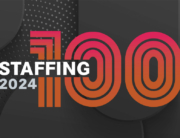Fresh-faced graduates working alongside Baby Boomers. Generation X directing interns who are Generation Y. This is the face of today’s workforce in many US organizations. And these varied age groups are often working for the same employer at the same time. This creates challenges for staffing companies and their clients. Members of each generation have been shaped by the major events of their times, and these different experiences mean different motivators, attitudes and preferred ways to work.
Monster surveyed more than 2,000 people across these generations, asking not only how they perceive the hiring process and the workplace, but also how they approach the evolving world. Jim Lanzalotto, Monster’s senior vice president of its staffing & healthcare businesses, offers insights into how staffing firms can help their clients make the most of this dynamic workforce.
Q: How has the changing generational makeup of the workforce transformed today’s workplace from what it was 10 or 20 years ago?
A: Today, we see four generations in the workforce, the most ever: * The Baby Boomers are 51 to 70 years old, nearing retirement. We call them “stable with staying power.”
* Generation X members are 35 to 50 years old. They highly value an organization’s loyalty to them. This generation holds huge potential for employers looking to hire candidates at the management level.
* Generation Y, or the millennials, are 21 to 34 years old and are searching for a career that offers a purpose beyond just earning a salary — though a competitive salary is still very important.
* Generation Z, the 15- to 20-year-olds, is just starting to enter the workforce. This is the most entrepreneurial generation.
With the brain drain from retiring Baby Boomers, employers and managers are concerned about what motivates employees — that is key.
When I entered the workforce, we were just coming out of a massive recession and you were just happy to get a job. When employment gets tight, management gets concerned about what motivates workers and what is going to keep them.
Q: How can staffing firms navigate the challenges associated with a multigenerational workforce, in terms of both hiring and employee management?
A: It’s an interesting dynamic: The most important thing is to pay attention to the key motivators for each generation. What motivates each type of worker, and why do they want to take a particular job?
Our research found, for example, that in the Baby Boom generation, the key motivator is health insurance. For members of Generation X and Generation Y, a top motivator is a competitive salary. And for Generation Z, the emerging workforce, a competitive salary was not only the top motivator but much more important than anything else.
Understanding those motivations will drive not only the acquisition of talent, but also managing it and making sure those people are fulfilled in their jobs. If you’re in a job and it’s not meeting your needs, you will look to go somewhere else.
Q: When it comes to building a great place to work, where does the multigenerational nature of the workforce come into play?
A: Companies should create multiple touch points for connecting with candidates — everything from direct email to Facebook. Make sure the brand message is consistent across all platforms. They should also poll their employees about how, where and when they want to work. Adding a generational filter to your annual employee satisfaction survey can help shed light on this as well.
Q: What are some of the benefits of having this team?
A: A multigenerational workforce has a significant variety of strengths that employers can tap into — you get diversity of thoughts and perspective. If you diversify your recruitment strategies to create a truly multigenerational workforce, you will build an unstoppable team.
It’s like a great sports team. Look at the New England Patriots. They have a great mix of unique talent: the skill level, the experience, the nature of the individuals. They have Tom Brady, arguably one of the best players in NFL history and almost 40, and in a couple of months they’re going to draft some players out of college and mesh them into the team. Mixing and meshing a team out of a whole variety of players is a great model.
Q: How do multiple levels of experience, both professional and personal, contribute to the success of employees and teams?
A: It’s important to have mentor relationships, both formal and informal. Helping projects get done, helping with personal and professional problems, and reaching goals — all those things become stronger when you have folks with more experience mentoring people with less experience.
Younger workers can also mentor more senior workers. For example, during the ecommerce boom of the late 1990s and early 2000s, younger workers were explaining to their elder colleagues how ecommerce worked on the Internet and how it was changing business. More recently, the same is true for the integration of social media as a business practice. Having a team with different perspectives on the Internet economy or emerging technologies is more effective than just hiring young consultants to show up and tell people what to do.
Q: How have new generations in the workforce affected the industry and the way staffing professionals do their jobs? How have they affected the culture and make-up of staffing companies and the industry overall?
A: In the past year or so, I have been fortunate to talk frequently about the multigenerational workforce to industry groups and to companies with all different kinds of audiences. Every time I have had this conversation, it has been about the meshing of different generations of workers and how to make it work — for the company and the employee.
The perspective and motivations of different generations of workers are critical. If you’re talking to a Gen Y worker and to a Baby Boomer, they have similar goals and accomplishments, but their communication platforms are different. Boomers focus on email messages; for millennials, email may be the last thing they will use — they may prefer to text and to multitask. And if you know anyone under the age of 20, don’t leave a voice mail.
Q: Do you see any common trends among this year’s Best Staffing Firms to Work For winners related to multigenerational workplaces that the staffing industry should aspire to as a whole?
A: Twenty years ago in this industry, there would have been much less diversity among the individuals getting up and accepting the awards. Today, it’s a mix of races, cultures, generations, thought processes and approaches to business. It’s diverse — it’s men and women of all ages, and it’s great to see. The industry has progressed along with other industries and is more multicultural, multigenerational and dynamic than it has been in the past. I think these companies are great models for the long-term success of any company.






